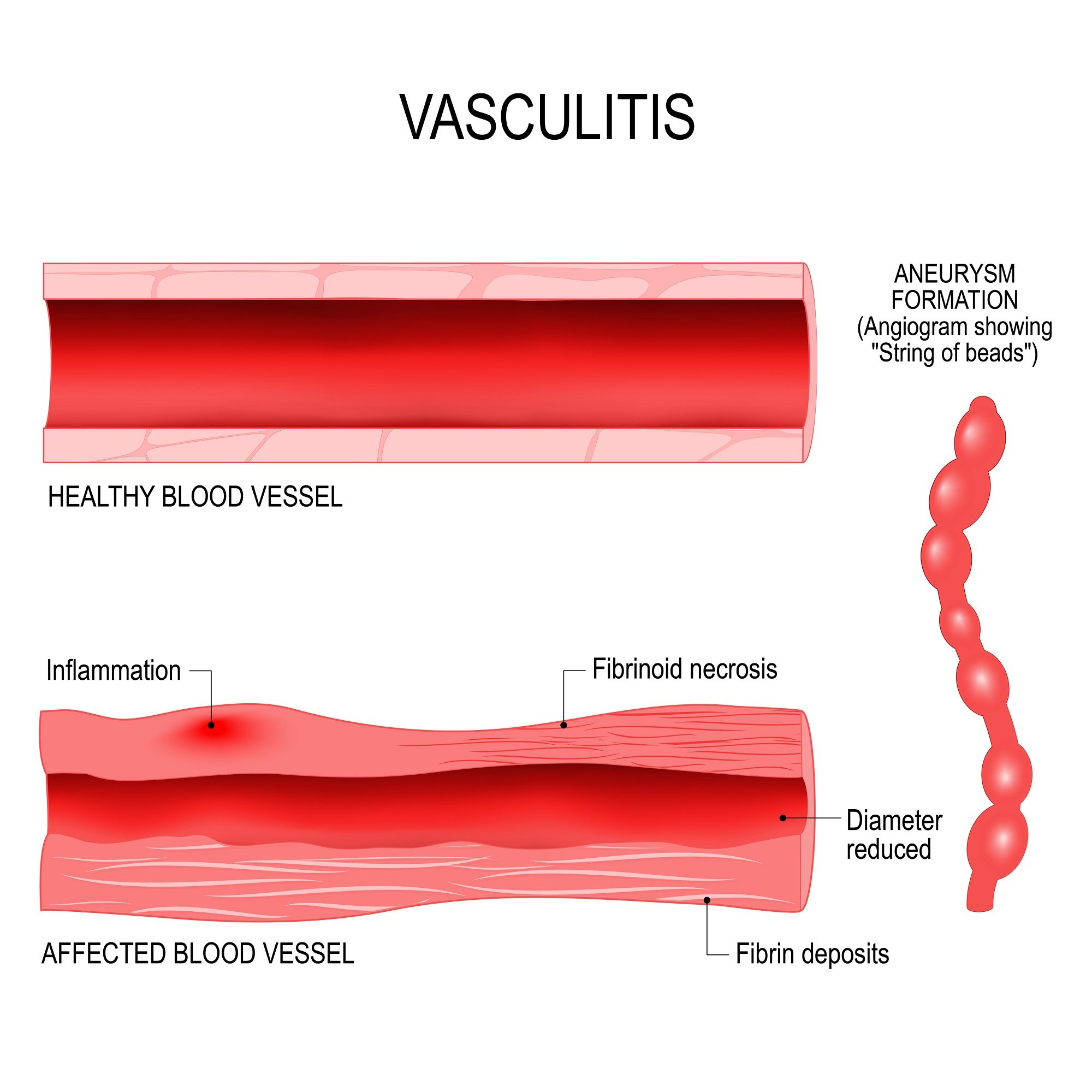Vasculitis
Vasculitis is an inflammation of the wall of a blood vessel, a tube that carries blood.
What is Vasculitis?
Vasculitis is an inflammation of the wall of a blood vessel, a tube that carries blood. Blood vessels are the arteries, veins, and capillaries in the body. Vasculitis can affect a blood vessel of any size. This inflammation may result in narrowing or occlusion (blocking) of the vessel; weakening of the vessel wall, which could lead to an aneurysm and/or to hemorrhage or bleeding. When vessel narrowing or occlusion occurs, the organ supplied by that blood vessel suffers from ischemia (lack of oxygen), which can cause damage with a loss of organ function or even patient death if a critical organ is involved.
There are many types of vasculitis. They comprise a group of rare and complex diseases. They are classified as primary when there is no known cause and classified as secondary when a cause can be identified. Examples of secondary vasculitis are those caused by infections, medication toxicity (drug reaction), cancer and other diseases such as lupus and rheumatoid arthritis. Examples of primary vasculitis include Wegener’s granulomatosis, Churg-Strauss syndrome, polyarteritis nodosa, Takayasu’s arteritis, and giant cell arteritis.
Risk Factors
Coming Soon!
Resources
Coming Soon!
Be The Voice For Patients Like You!
Vascular Cures is inviting patients and advocates to share their stories, advise on our programs, and help us advocate for patient needs. Patients as Partners is a community where patients are heard, empowered, and encouraged to impact the health system. Learn more and request more information here.


